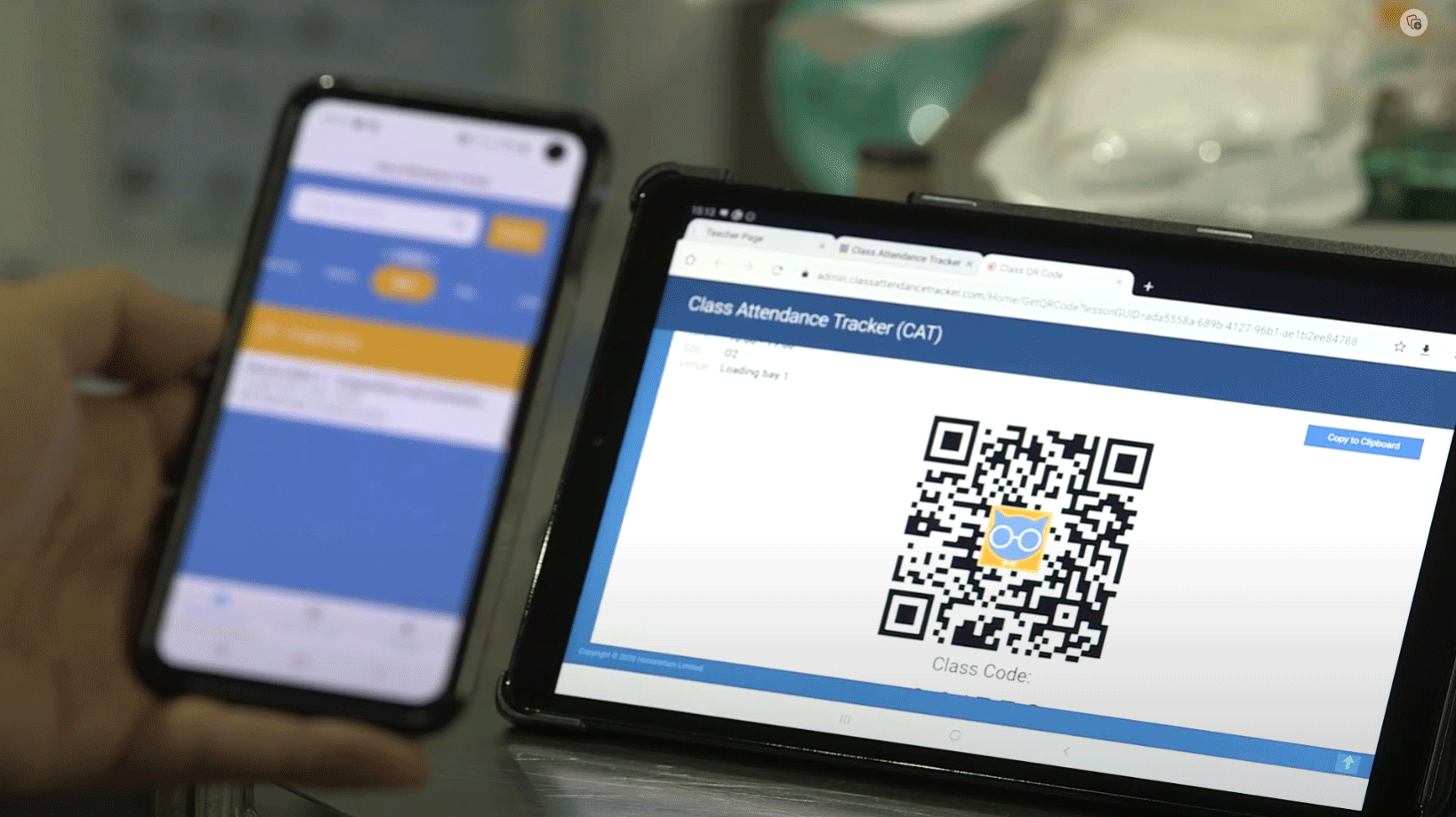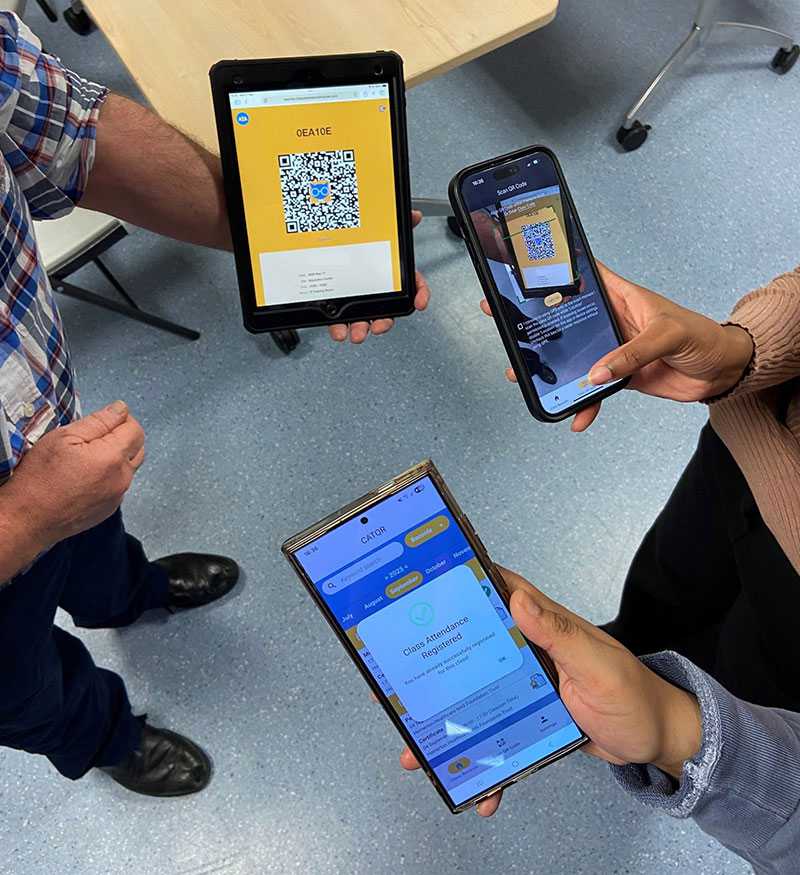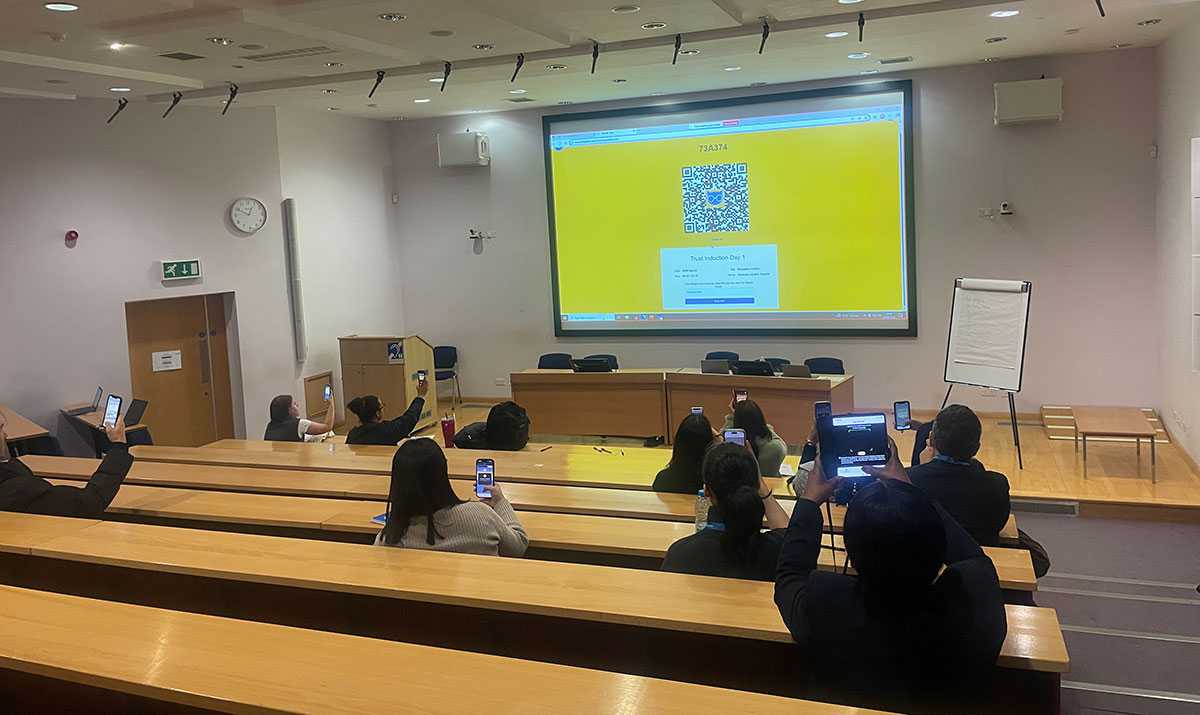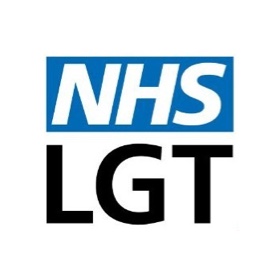Using CATQR to Streamline Training Attendance at Homerton Healthcare
Accurate electronic records for updating ESR
Homerton Healthcare NHS Foundation Trust needed a reliable and consistent way to record attendance at mandatory training. Reliance on paper registers was linked with delays, inconsistency, and added administrative workload. By introducing CATQR, the Trust created a faster, simpler, and more accurate process for staff and administrators.
With over 90% of staff now using the system, CATQR has enabled smoother inductions, improved compliance reporting, and reduced disputes, while giving staff direct access to their own training records.
Context & Challenge
At Homerton Healthcare, recording attendance at mandatory training had traditionally relied on paper registers. While this was a familiar approach, it created several challenges for both learners and administrators. Attendance records could take time to process, leading to occasional gaps in producing compliance figures and delays in confirming payment for bank staff who attended face-to-face training. Trainers also used a variety of certificate templates, which made it difficult to maintain consistency across sessions.
These issues were most visible in mandatory training sessions, where the scale and frequency of attendance made the limitations of paper processes clear. For learners, the experience was often frustrating: signing sheets could be distracting and signatures were sometimes missed. For administrators, deciphering handwritten registers was prone to error and created additional workload. In addition verifying past attendance could mean digging through old paper registers rather than carrying out a quick search online.

CATQR mobile app scanning a class QR code with the attendance record showing immediately on the app and administrator analytics.
Approach & Solution
The QR-based approach has fitted naturally into Homerton’s training environment. All new starters are asked to create a CATQR profile before attending induction, and the vast majority arrive ready to use the tool. Because CATQR uses the staff member’s National Insurance (NI) number as the unique profile identifier, attendance and competence records can be matched via the NI number in ESR when staff transfer from other NHS Trusts. With their consent, Homerton can be added as their primary or secondary organisation, allowing training records to be shared across employers with their confirmation. For example, if a new colleague has recently completed Oliver McGowan Mandatory Training on Learning Disability and Autism at another Trust, that record can be visible both to Homerton and their other employer.
Homerton chose CATQR because of its simplicity and flexibility for learners, facilitators, and administrators. For learners, the process is straightforward: open the mobile app and scan the QR code displayed during a training session. This not only makes attendance registration quick and seamless but also gives staff ownership of their own training records, with attendance data available at their fingertips.

During the session, the facilitator displays a dynamic CATQR code—refreshing every few seconds—on his iPad. Staff scan the code using their CATQR mobile app to register their attendance instantly and securely.
The system has also supported greater flexibility in local training delivery. For instance, the Graham Stroke Unit is able to organise and deliver training independently of the central learning team, while maintaining full data transparency for learners, managers, and administrators. This makes it much easier to collect and report activity data across the organisation.
CATQR has proved adaptable beyond classroom training. It can be used to record attendance at both in-person and virtual sessions, to log completion of a workbook, or even to grant temporary access to buildings where staff do not have their ID badges at the time. Following its early success, the Trust has widened its use of the tool to accommodate more varied training schedules, including preceptorship study days, fire warden training, and ad-hoc learning events. This breadth of application has helped Homerton strengthen compliance reporting and create a more consistent, efficient process across diverse formats.
Over the last two years, more than 70 colleagues have been trained as CATQR facilitators or administrators, enabling them to generate class codes themselves by entering session details such as the title and time. This has allowed departments and wards to manage their own training activities while giving the Learning Team visibility of upcoming sessions and real-time attendance data. The system also provides a reliable way of confirming compliance and reducing disputes. Administrators can view a complete attendance history for individual learners, which is particularly useful during planned maintenance periods when the ESR or LMS is unavailable.

During the session, the facilitator displays a dynamic CATQR code—refreshing every few seconds—on his iPad. Staff scan the code using their CATQR mobile app to register their attendance instantly and securely.
Implementation in Practice
The roll-out involved close collaboration between the mandatory training and induction team, clinical educators, governance leads, and IT colleagues. The IT team carried out data security checks and approved CATQR as a trusted app, making it available on Trust-owned smartphones and tablets.
CATQR was introduced in a phased way, beginning with Trust-wide use at corporate induction. All new starters are required to create a CATQR profile, ensuring that the system becomes part of their training journey from day one. It is also expected that CATQR is used at all mandatory training sessions, with clear communication circulated across the Trust and first-line support available at events. As a result, over 90% of Homerton staff now hold a CATQR profile. New starter drop-in sessions are also used to provide hands-on support for those who need additional help.
Learners are introduced to CATQR multiple times during induction week, reinforcing user habits through training sessions such as resuscitation, fire safety, and moving and handling. Facilitators and administrators are trained in one-hour sessions on how to generate class codes and access attendance data, aided by a user manual and administrator support.
In practice, there have been very few challenges with the app itself. The most common issues have related to Wi-Fi connectivity in certain sites, which are managed in partnership with the IT team. That said, CATQR works without a Wi-Fi connection, as the app stores attendance locally and automatically commits it to the system once the app reconnects to the internet.
Looking back, several lessons stand out from Homerton’s experience. Early engagement with digital literacy champions was key to ensuring smooth adoption, alongside regular Wi-Fi blind spot checks in partnership with the IT team.
Importantly, the developers have shown real flexibility in adapting features to meet the needs of NHS organisations. Recent enhancements include QR code-secured attendance certificates, which learners can forward directly from the app. This has reduced the administrative workload of confirming training for revalidation or when staff move between organisations. The administrator portal has also been streamlined to improve navigation, with the CATQR team from Shinetech Software consistently engaging with Homerton to enhance the user experience.

During Trust Induction, the facilitator displays a dynamic CATQR code—refreshing every few seconds—on the lecture theatre’s projector screen. Staff scan the code using their CATQR mobile app to register their attendance instantly and securely.
Results & Impact
The impact of CATQR has been clear. Registration times are now significantly faster: most new starters can simply scan the code and walk in. For administrators, the removal of paper registers has eliminated the need to decipher handwriting or chase up unclear records, saving considerable time and reducing errors.
“We use ESR as our primary HR and Learning system, so having CATQR attendance records already accurate and in electronic form — with colleagues encouraged to link to Employee Numbers — makes it easy to update ESR. We also value that the NHS uses a single unified version of the CATQR platform, meaning improvements funded by one Trust benefit us all.”
– Brian Leveson, Mandatory Training and Induction Manager
For learners and trainers, the experience has improved too. Without the distraction of circulating sign-in sheets, sessions can start and end smoothly, with scanning managed at entry and exit. Learners are also more confident in making training-related enquiries, often able to reference the exact course title and date themselves.
For managers and administrators, the precision of attendance data has provided a solid basis for compliance reporting, reduced disputes, and enabled timely follow-up where needed.
About Class Attendance Tracker (CAT) QR
Class Attendance Tracker QR (CATQR) is an award-winning digital solution for monitoring training attendance that maximises learning time. With the scan of a QR code, attendees can sign in and immediately view confirmation of their attendance on the CAT mobile app. It takes seconds for organisers to create a class QR code and they can view all attendance data in real time.
The CAT QR solution was developed in conjunction with Barts Health NHS Trust, which employs over 24,000 permanent and temporary staff and manages internationally renowned teaching hospitals, St Bartholomew’s Hospital and The Royal London Hospital.
CATQR has interoperable system links enabling attendance data to be shared with other systems automatically, assuming the individual has given their consent. CATQR also has cheat prevention techniques built in so that people can’t register their attendance if they’re not in class!
Click here to watch CATQR in action at NHS Nightingale Hospital and NHS COVID-19 Mass Vaccination Centres.





